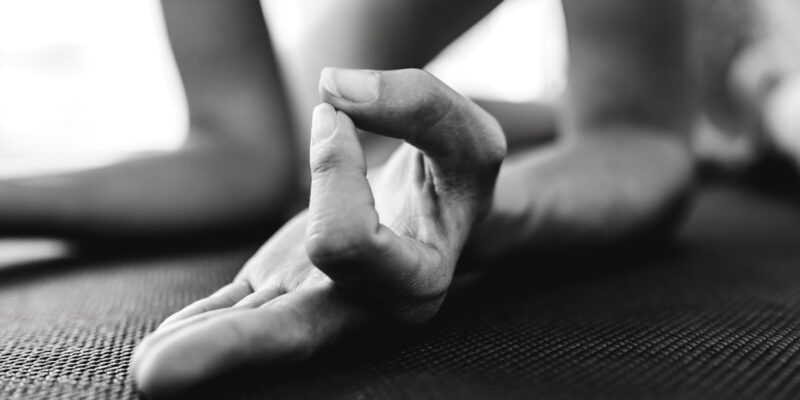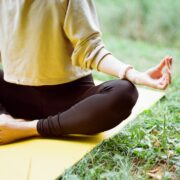
Flexibility Boost: Effective Stretching Routines
Stretching is an essential component of overall health and wellness. It not only helps to improve flexibility and range of motion, but it also plays a crucial role in injury prevention, pain relief, and athletic performance. Incorporating stretching into your daily routine can have numerous benefits for both your physical and mental well-being.
Key Takeaways
- Stretching is important for improving flexibility and range of motion.
- There are three main types of stretching: static, dynamic, and PNF.
- It’s important to warm up before stretching to prevent injury.
- Dos of stretching include holding stretches for at least 30 seconds and breathing deeply, while don’ts include bouncing or forcing stretches.
- Stretching can be targeted to specific muscle groups, including the upper body, lower body, and core.
The Importance of Stretching for Flexibility
Flexibility refers to the ability of your muscles and joints to move through their full range of motion. Regular stretching can help to improve flexibility by lengthening the muscles and increasing their elasticity. This, in turn, allows for greater joint mobility and a wider range of motion.
Increased flexibility has many benefits. It can improve posture and alignment, reduce muscle imbalances, and enhance athletic performance. It can also help to prevent injuries by improving the body’s ability to absorb impact and reducing the risk of muscle strains or tears.
Types of Stretching: Static, Dynamic, and Proprioceptive Neuromuscular Facilitation (PNF)
There are several different types of stretching, each with its own benefits and drawbacks. The three most common types are static stretching, dynamic stretching, and proprioceptive neuromuscular facilitation (PNF) stretching.
Static stretching involves holding a stretch for an extended period of time, typically 30 seconds to 2 minutes. This type of stretching is often done after a workout or physical activity when the muscles are warm. Static stretching helps to improve flexibility by lengthening the muscles and increasing their range of motion.
Dynamic stretching involves moving through a full range of motion in a controlled manner. This type of stretching is typically done before a workout or physical activity to warm up the muscles and prepare them for movement. Dynamic stretching helps to improve flexibility by increasing blood flow to the muscles and improving their elasticity.
PNF stretching combines static stretching with isometric contractions to increase flexibility. It involves contracting a muscle against resistance for a few seconds, then relaxing and stretching the muscle further. PNF stretching is often done with a partner or using a prop, such as a strap or resistance band. It can be an effective way to improve flexibility, but it should be done with caution to avoid overstretching or injury.
How to Warm Up Before Stretching
| Warm Up Exercise | Description | Benefits |
|---|---|---|
| Jumping Jacks | Jumping while spreading arms and legs apart and then returning to starting position | Increases heart rate, warms up muscles, improves coordination |
| High Knees | Running in place while lifting knees up to hip level | Increases heart rate, warms up leg muscles, improves balance and coordination |
| Butt Kicks | Running in place while kicking heels up to touch buttocks | Increases heart rate, warms up leg muscles, improves flexibility and coordination |
| Arm Circles | Standing with arms extended, making circular motions with arms | Warms up shoulder and arm muscles, improves flexibility and range of motion |
| Leg Swings | Standing on one leg and swinging the other leg back and forth | Warms up leg muscles, improves flexibility and balance |
Warming up before stretching is important to prepare the muscles for movement and reduce the risk of injury. A proper warm-up should include light aerobic exercise to increase blood flow and raise body temperature, as well as dynamic stretching to warm up the muscles.
Examples of warm-up exercises include jogging or brisk walking, jumping jacks, high knees, or arm circles. These exercises should be done for 5-10 minutes to gradually increase heart rate and body temperature. After the warm-up, dynamic stretching exercises can be performed to further prepare the muscles for movement.
The Dos and Don’ts of Stretching
To ensure safe and effective stretching, it’s important to follow some dos and don’ts:
Dos:
– Start with a warm-up before stretching
– Stretch both sides of the body equally
– Breathe deeply and relax into each stretch
– Hold each stretch for 30 seconds to 2 minutes
– Gradually increase the intensity of the stretch over time
– Listen to your body and stop if you feel pain or discomfort
Don’ts:
– Don’t bounce or use jerky movements while stretching (this can cause injury)
– Don’t hold your breath while stretching (this can increase tension in the muscles)
– Don’t force a stretch beyond your comfort level (this can lead to injury)
– Don’t skip the warm-up before stretching (this can increase the risk of injury)
Stretching for Specific Muscles: Upper Body, Lower Body, and Core
Stretching can target specific muscle groups in the upper body, lower body, and core. Here are some examples of stretches for each muscle group:
Upper Body:
– Shoulder Stretch: Stand tall and reach one arm across your chest, using the opposite hand to gently pull the arm closer to your body. Hold for 30 seconds on each side.
– Chest Stretch: Stand with your feet shoulder-width apart and interlace your fingers behind your back. Straighten your arms and lift them away from your body, feeling a stretch in your chest. Hold for 30 seconds.
– Tricep Stretch: Extend one arm overhead and bend it at the elbow, reaching your hand towards the opposite shoulder blade. Use the opposite hand to gently pull the elbow further back. Hold for 30 seconds on each side.
Lower Body:
– Hamstring Stretch: Sit on the floor with one leg extended in front of you and the other leg bent with the foot against the inner thigh. Reach forward towards your toes, keeping your back straight. Hold for 30 seconds on each side.
– Quadricep Stretch: Stand tall and grab one ankle, pulling it towards your glutes while keeping your knees close together. Hold for 30 seconds on each side.
– Calf Stretch: Stand facing a wall with one foot in front of the other. Lean forward, placing your hands on the wall for support, and press the back heel into the ground to feel a stretch in the calf muscle. Hold for 30 seconds on each side.
Core:
– Cat-Cow Stretch: Start on all fours with your hands under your shoulders and knees under your hips. Inhale as you arch your back and lift your head towards the ceiling (cow pose), then exhale as you round your spine and tuck your chin towards your chest (cat pose). Repeat for 10-15 breaths.
– Child’s Pose: Start on all fours and then sit back onto your heels, reaching your arms forward and resting your forehead on the ground. Hold for 30 seconds.
– Spinal Twist: Lie on your back with your arms extended out to the sides. Bend one knee and cross it over the opposite leg, then gently lower both knees to one side while keeping your shoulders on the ground. Hold for 30 seconds on each side.
Incorporating Yoga and Pilates into Your Stretching Routine
Yoga and Pilates are two forms of exercise that can be incorporated into a stretching routine to improve flexibility and overall well-being.
Yoga is a practice that combines physical postures, breathing exercises, and meditation. It focuses on strength, flexibility, and balance, while also promoting relaxation and stress reduction. Many yoga poses involve stretching and lengthening the muscles, making it an excellent addition to a stretching routine.
Some yoga poses that can be incorporated into a stretching routine include:
– Downward Dog: Start on all fours, then lift your hips up towards the ceiling, forming an upside-down V shape with your body. Press your heels towards the ground and relax your head between your arms. Hold for 30 seconds.
– Warrior II: Stand with your feet wide apart, then turn one foot out to the side and bend the knee. Extend your arms out to the sides at shoulder height, keeping your gaze over the front hand. Hold for 30 seconds on each side.
– Pigeon Pose: Start in a high plank position, then bring one knee towards your chest and place it on the ground behind your wrist. Extend the other leg straight back behind you, keeping your hips square. Lower down onto your forearms or rest your forehead on the ground. Hold for 30 seconds on each side.
Pilates is a low-impact exercise method that focuses on core strength, flexibility, and body awareness. It incorporates controlled movements and breathing techniques to improve posture, balance, and overall body alignment. Many Pilates exercises involve stretching and lengthening the muscles, making it a great addition to a stretching routine.
Some Pilates exercises that can be incorporated into a stretching routine include:
– Roll-Up: Lie on your back with your arms extended overhead. Inhale as you roll up one vertebra at a time, reaching towards your toes. Exhale as you slowly roll back down to the starting position. Repeat for 10-15 repetitions.
– Swan Dive: Lie on your stomach with your arms extended overhead. Inhale as you lift your chest and arms off the ground, keeping your gaze forward. Exhale as you lower back down to the starting position. Repeat for 10-15 repetitions.
– Spine Stretch Forward: Sit tall with your legs extended in front of you and your arms reaching forward. Inhale as you lengthen your spine, then exhale as you round forward, reaching towards your toes. Inhale to sit tall again and repeat for 10-15 repetitions.
Stretching for Improved Athletic Performance
Stretching plays a crucial role in improving athletic performance by increasing flexibility, range of motion, and muscle strength. It helps to prepare the body for physical activity and reduce the risk of injury.
Dynamic stretching is particularly beneficial for athletes as it helps to warm up the muscles and increase blood flow before exercise. Examples of dynamic stretches for athletes include leg swings, arm circles, walking lunges, and high knees.
Static stretching can also be beneficial for athletes when done after a workout or physical activity. It helps to cool down the muscles and prevent muscle tightness or soreness. Examples of static stretches for athletes include standing quad stretches, seated hamstring stretches, and standing calf stretches.
Stretching for Pain Relief and Injury Prevention
Stretching can be an effective way to prevent injuries and relieve pain by improving flexibility, reducing muscle imbalances, and increasing joint mobility. It can also help to alleviate muscle tension and tightness, which can contribute to pain and discomfort.
Stretching can be particularly beneficial for common injuries such as muscle strains, sprains, and tendonitis. It helps to promote healing by increasing blood flow to the injured area and reducing inflammation. Examples of stretches that can help with common injuries include:
– Achilles Tendon Stretch: Stand facing a wall with one foot in front of the other. Lean forward, placing your hands on the wall for support, and press the back heel into the ground to feel a stretch in the calf muscle. Hold for 30 seconds on each side.
– IT Band Stretch: Stand tall with one foot crossed behind the other. Lean towards the side of the crossed leg, reaching your arm overhead and feeling a stretch along the side of your leg. Hold for 30 seconds on each side.
– Hip Flexor Stretch: Kneel on one knee with the other foot in front of you, making sure both knees are at a 90-degree angle. Lean forward into the front leg, feeling a stretch in the hip flexor of the back leg. Hold for 30 seconds on each side.
How Often Should You Stretch?
The frequency and duration of stretching depend on your individual goals and needs. However, as a general guideline, it is recommended to stretch at least 2-3 times per week for 10-30 minutes each session.
If you are looking to improve flexibility or recover from an injury, you may need to stretch more frequently or for longer durations. On the other hand, if you are already quite flexible or have limited time, shorter stretching sessions may be sufficient.
It’s important to listen to your body and not overdo it. If you feel any pain or discomfort while stretching, it’s best to stop and consult with a healthcare professional.
Tips for Staying Motivated to Stretch Regularly
Incorporating stretching into your daily routine can be challenging, but there are several tips that can help you stay motivated:
– Set specific goals: Whether it’s improving flexibility, preventing injuries, or relieving pain, setting specific goals can help you stay focused and motivated.
– Find a routine that works for you: Experiment with different times of the day and durations to find a stretching routine that fits into your schedule and feels manageable.
– Make it enjoyable: Find ways to make stretching enjoyable, such as listening to music, watching a TV show, or practicing in a peaceful environment.
– Mix it up: Try different types of stretching, incorporate yoga or Pilates, or join a stretching class to keep things interesting and prevent boredom.
– Track your progress: Keep a journal or use a fitness app to track your progress and celebrate your achievements along the way.
Stretching is an essential component of overall health and wellness. It improves flexibility, range of motion, athletic performance, and can help prevent injuries and relieve pain. By incorporating stretching into your daily routine and following proper techniques, you can reap the numerous benefits that stretching has to offer. So why wait? Start stretching today and experience the positive impact it can have on your physical and mental well-being.
FAQs
What is flexibility?
Flexibility refers to the range of motion in a joint or group of joints. It is the ability to move joints through their full range of motion.
Why is flexibility important?
Flexibility is important for maintaining good posture, preventing injuries, and improving athletic performance. It also helps to reduce muscle tension and improve circulation.
What are stretching routines?
Stretching routines are a series of exercises designed to improve flexibility. They involve moving the joints through their full range of motion to increase flexibility and reduce muscle tension.
What are the benefits of stretching routines?
Stretching routines can help to improve flexibility, reduce muscle tension, improve circulation, and prevent injuries. They can also help to improve athletic performance and reduce the risk of muscle soreness after exercise.
How often should I do stretching routines?
It is recommended to do stretching routines at least 2-3 times per week. However, it is important to listen to your body and not overdo it. If you feel pain or discomfort, stop the exercise and consult a healthcare professional.
What are some examples of stretching exercises?
Some examples of stretching exercises include hamstring stretches, quad stretches, calf stretches, shoulder stretches, and back stretches. There are many different types of stretching exercises that can be incorporated into a stretching routine.
How long should I hold each stretch?
It is recommended to hold each stretch for 15-30 seconds. However, some stretches may need to be held for longer depending on the individual’s flexibility and comfort level.
Should I stretch before or after exercise?
It is recommended to do a warm-up before exercise and then stretch after exercise. This helps to prepare the muscles for exercise and then reduce muscle tension and improve flexibility after exercise.


















